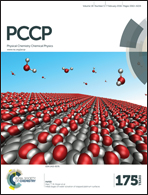Growth of 3D hierarchical porous NiO@carbon nanoflakes on graphene sheets for high-performance lithium-ion batteries†
Abstract
Nickel oxide (NiO) as one of the anode electrode materials for lithium ion batteries (LIBs) has attracted considerable research attention. However, the poor electron conductivity and bad capacity retention performance greatly hinder its wide application. Herein, we prepared a novel three-dimensional (3D) hierarchical porous graphene@NiO@carbon composite via a simple solvothermal process, in which the graphene sheets were uniformly wrapped by porous NiO@carbon nanoflakes. In this case, nickelocene was creatively used as the precursor for both NiO and amorphous carbon, while graphene oxide sheets were employed as a template for the two-dimensional nanostructure and the conductive graphene backbone. The resultant composites possess high surface area (196 m2 g−1) and large pore volume (0.46 cm3 g−1). When it is applied as an anode for LIBs, the carbon outer-layer can effectively suppress the large volume change and serious aggregation of NiO nanoparticles during the charge–discharge process. Therefore, the graphene@NiO@carbon composites show a high reversible capacity of 1042 mA h g−1 at a current density of 200 mA g−1, an excellent rate performance and long cycle life. We believe that our method provides a new route for the fabrication of novel transition metal oxide composites.


 Please wait while we load your content...
Please wait while we load your content...